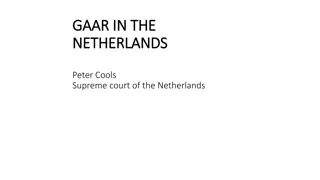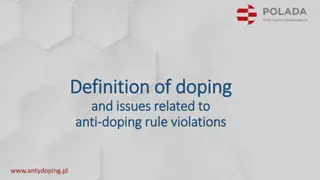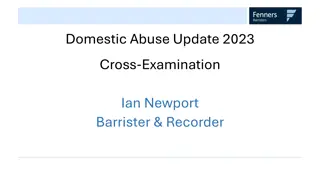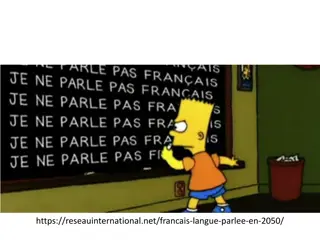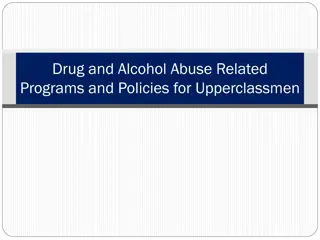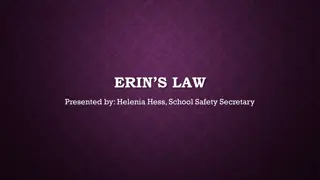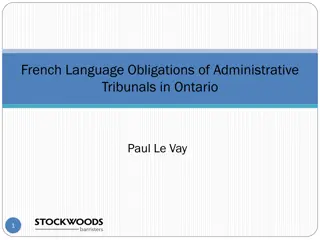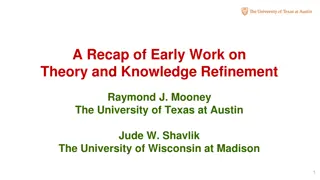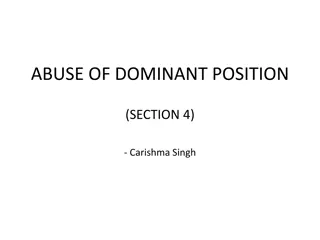French General Anti-Abuse Rule (GAAR): Evolution and Application
The French General Anti-Abuse Rule (GAAR) has seen developments through statutory revisions and case law interpretations since 1941. This rule targets fictitious acts and acts aimed at reducing tax burdens through exploiting legal technicalities. The legitimacy of GAAR extends to tax treaties, with considerations for real tax advantages and sole tax purposes. The application of GAAR requires assessing the potential tax benefits and aligning with the general principle of law.
Download Presentation

Please find below an Image/Link to download the presentation.
The content on the website is provided AS IS for your information and personal use only. It may not be sold, licensed, or shared on other websites without obtaining consent from the author. Download presentation by click this link. If you encounter any issues during the download, it is possible that the publisher has removed the file from their server.
E N D
Presentation Transcript
French GAAR: abus de droit Statutory GAAR rewritten by case law Statute 1941 Case law 1981 rewrites legal tests Case law 2006 expands the scope and fine-tunes the tests Parliament 2008 copies case law into new abuse of law provision in tax code
French GAAR: abus de droit Covers fictitious acts (including simulation) + acts made for the sole motive of reducing the normal tax burden by applying the letter of the law against its purpose Legitimacy of GAAR and application to tax treaties Statutory GAAR can be seen as application of general principle of law: in the Janfin case (27 September 2006), the Conseil d Etat justifies the abuse of law doctrine (specifically fraude la loi ) by the general principle of law according to which fraud can have no acceptable consequences in law Application of domestic (statutory) GAAR to tax treaties if no relevant treaty provision (Conseil d Etat, 25 October 2017, Nr 396954, Verdannet )
French GAAR: abus de droit Tax advantage must be real: if scheme doomed to fail because of regular tax provisions, GAAR is not applicable because no tax advantage (Conseil d Etat, 5 March 2007, Nr 284457, Pharmacie des Challonges ) Calculation of tax advantage may require hypothetical verifications: when the tax administration recharacterizes a French-Netherlands transaction as a French-US transaction, the tax treaty between France and the US must be taken into account in order to check whether taxpayer gained something by switching to the France-Netherlands treaty (Conseil d Etat, 21 July 2017, Nr 392908, Thermo Electro Holdings)
French GAAR: abus de droit Sole tax purpose (with exception in case law for negligible financial gains) Compare ECJ case law: essential (not exclusive) tax objective, (22 November 2017, C-251/16, Cussens, 53 and 60) Purpose of the law: travaux pr paratoires in domestic legislation Treaties: artificial arrangements may often be seen as going against the purpose of tax law: in the Verdannet case (25 October 2018, Nr 396954), the artificial interposition of a Luxembourg company was seen as a violation of the spirit of the France-Luxembourg tax treaty that allocates the right to tax for transactions that are really done by Luxembourg companies
French GAAR: abus de droit Burden of proof on tax administration, but may shift for procedural reasons Strong judicial oversight, even by supreme administrative court (Conseil d Etat), on points of law (the legal tests) and the facts of the case


